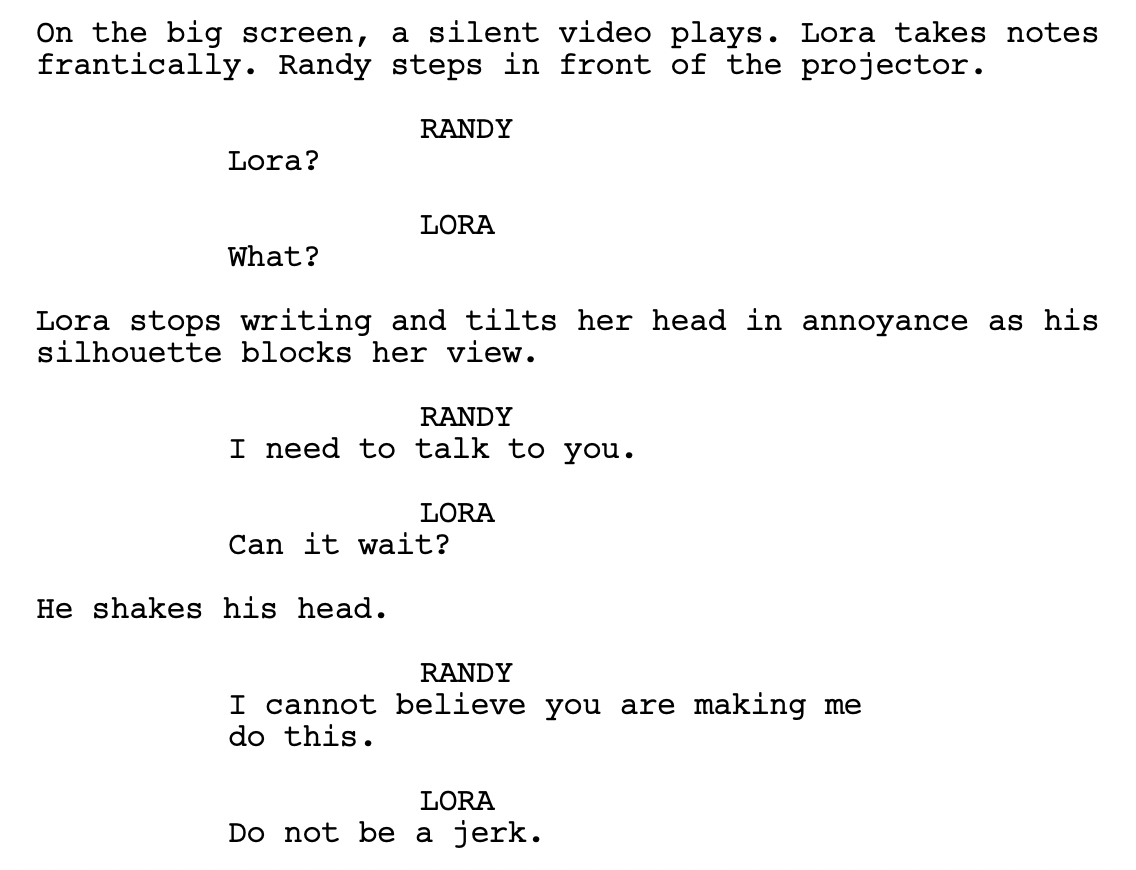Fix This - 2.23.25
If you’ve read our newsletter for a while, you know we’re big believers in good writing. It doesn’t matter how amazing your story is if the writing is sloppy. The list of potential problems is long. Watch out for spelling errors, formatting mistakes, logic flaws, bad dialogue, unnecessary repetition, and more.
To help you spot problems in your own writing, practice finding them in someone else’s. Take a look at the excerpt below. Can you identify the things that need changing?
When we read this excerpt, the first thing we notice is the writer is overdirecting the actors. “Tilts her head in annoyance” is too prescriptive. We know it’s tempting to write scenes exactly as you see them in your head, but that can lead to micromanaging the talent. Instead of telling us that Lora tilts her head, focus on how she feels. Leave it to your actor to bring your characters to life. That’s their job!
If you read the beginning of this excerpt carefully, you might notice the timing of the action and dialogue creates a logic flaw.
When Randy steps in front of the projector, his silhouette will block Lora’s view. Okay, fine. BUT, the writer doesn’t write that her view is blocked until after the dialogue. By the time those characters have said their lines, her view would have already been blocked. That delay can feel awkward for the reader. To fix the disconnect, you an move that detail into the first paragraph by writing, “Randy steps in front of the projector, blocking Lora’s view.”
Because we think it’s obvious her view will be blocked, we cut that part of the line altogether.
There are more changes we can make. Can you spot them?
We encourage screenwriters to be as concise as possible. Don’t waste space on things that don’t move your scene forward. If you look at the dialogue and ask yourself if you need each line, we bet you’ll find some lines you can trim.
“Lora?” and “What?” aren’t doing much for you. If you cut them, would you even notice? We say no. Plus, getting rid of those lines gets you into the heart of the scene quicker and creates momentum.
In the interest of saving space and getting rid of redundancy, you also have the option to get rid of “He shakes his head.” Why? Because shaking his head means no. Continuing to press the issue also means no. There’s no need to tell us twice that Randy feels like he can’t wait.
One more change to go!
Take a look at the last few lines of dialogue. Do they read a little funny? It’s because the characters aren’t using contractions when they speak. There may be cases where you want to skip contractions to create a character’s voice or to add emphasis, but in general, people use contractions when they speak.
See how adding contractions makes the dialogue smoother and more realistic?
That’s better!
You might have noticed that adding the contraction creates an orphan word in Randy’s dialogue. (An orphan word is a single word that ends up on a line by itself.) You could avoid the orphan by not using contractions, but we think the contractions are more important in this case. You could also find a different way for Randy to say the same thing in less words. Here, we’ve opted to live with the orphan. In most cases, we try to get rid of them, but they can’t always be avoided.
For more insight on how to make sure the writing in your script is professional and polished, sign up for our self-paced screenwriting course, Screenwriting Essentials. We have an entire lesson dedicated to improving your writing style so you can tell your story clearly and effectively.






